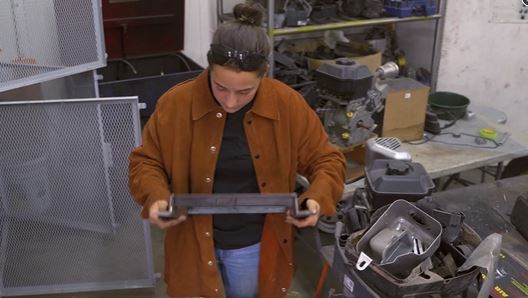Millwright
Los Millwrights se encargan de instalar, reparar y solucionar problemas de equipos mecánicos en plantas de producción, granjas y obras de construcción. Utilizan diversas herramientas manuales y equipos de corte. Además, sueldan, interpretan diagramas y crean dibujos esquemáticos para completar un proyecto. Los Millwrights trabajan principalmente con maquinaria y equipos metálicos y de alta precisión.
¿Qué responsabilidades tendré?
- Instalar, mantener, reparar, solucionar problemas y probar maquinaria y equipos especializados.
- Realizar trabajos de soldadura, fabricación de metales y montaje eléctrico
- Leer e interpretar diagramas, planos esquemáticos y manuales de servicio.
- Manejar carretillas elevadoras, plataformas rodantes, elevadores de personal y otros equipos.
- Montar rodamientos, alinear engranajes y ejes, acoplar motores y conectar acoplamientos.
- Proporcionar revisiones de planos y sugerencias relacionadas con la inspección y el ensayo de piezas.
- Mantenimiento y reparación de sistemas hidráulicos y neumáticos
- Señalizar a los operadores de grúas y ascensores, indicándoles dónde colocar la maquinaria, según sea necesario.
- Mantener un entorno de trabajo seguro y limpio mediante el cumplimiento de los procedimientos, normas y reglamentos.
- Garantizar el funcionamiento correcto y seguro de todo el equipo y la maquinaria.
- Volver a montar máquinas y equipos
- Mantener el historial y la documentación de los equipos al tiempo que se identifican oportunidades de mejora.
- Instalar robots y programar controles electrónicos
- Trabajar con otros departamentos para garantizar un entorno de equipo productivo.
- Visualizar y construir proyectos desde cero
- Operar máquinas para modificar piezas probadas o fabricar piezas experimentales para las pruebas.
Cursos de bachillerato recomendados:
- formación agrícola, en particular mecánica agrícola
- ciencia
- geometría
- clases de física y matemáticas y ciencias afines
Formación requerida:
En Estados Unidos, los constructores de molinos necesitan al menos un título de bachillerato o equivalente. La mayoría de los carpinteros de ribera aprenden su oficio mediante un aprendizaje de tres o cuatro años en el que realizan al menos 144 horas de instrucción técnica pertinente y hasta 2.000 horas de formación remunerada en el puesto de trabajo.






